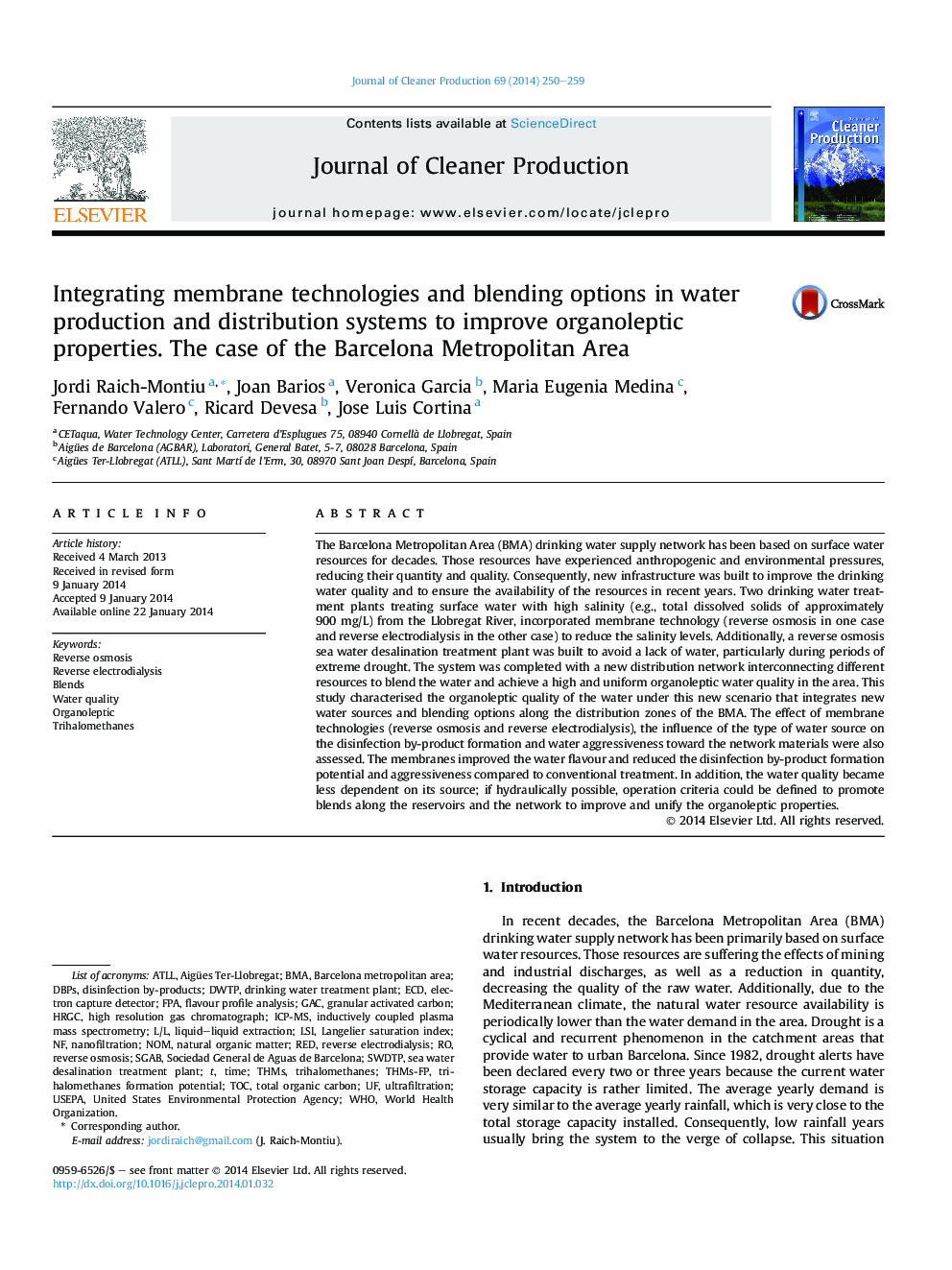| کد مقاله | کد نشریه | سال انتشار | مقاله انگلیسی | نسخه تمام متن |
|---|---|---|---|---|
| 1745070 | 1522177 | 2014 | 10 صفحه PDF | دانلود رایگان |
• Evaluation of the performance of membrane technology in drinking water treatment plants.
• Due to different water sources, a complex drinking water supply system is managed.
• Real operational conditions of key points in the distribution network were studied.
• Membrane technologies improved the organoleptic properties of water.
• Reduction of formation of trihalomethanes by membrane technologies was reinforced.
The Barcelona Metropolitan Area (BMA) drinking water supply network has been based on surface water resources for decades. Those resources have experienced anthropogenic and environmental pressures, reducing their quantity and quality. Consequently, new infrastructure was built to improve the drinking water quality and to ensure the availability of the resources in recent years. Two drinking water treatment plants treating surface water with high salinity (e.g., total dissolved solids of approximately 900 mg/L) from the Llobregat River, incorporated membrane technology (reverse osmosis in one case and reverse electrodialysis in the other case) to reduce the salinity levels. Additionally, a reverse osmosis sea water desalination treatment plant was built to avoid a lack of water, particularly during periods of extreme drought. The system was completed with a new distribution network interconnecting different resources to blend the water and achieve a high and uniform organoleptic water quality in the area. This study characterised the organoleptic quality of the water under this new scenario that integrates new water sources and blending options along the distribution zones of the BMA. The effect of membrane technologies (reverse osmosis and reverse electrodialysis), the influence of the type of water source on the disinfection by-product formation and water aggressiveness toward the network materials were also assessed. The membranes improved the water flavour and reduced the disinfection by-product formation potential and aggressiveness compared to conventional treatment. In addition, the water quality became less dependent on its source; if hydraulically possible, operation criteria could be defined to promote blends along the reservoirs and the network to improve and unify the organoleptic properties.
Journal: Journal of Cleaner Production - Volume 69, 15 April 2014, Pages 250–259
